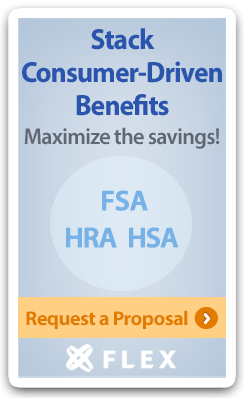Benefits Buzz
The Flex General Agency is excited to welcome Bright Health into our individual product portfoli
The Affordable Care Act (ACA) created two reporting requirements which are spelled out in Internal Revenue Code Sections 6055 and 6056.
Section 6055 requires every provider of minimum essential coverage to report information of those employees and dependents who enroll in coverage. Reporting this information to the Internal Revenue Service (IRS) is still required even though the Individual Shared Responsibility penalty (i.e. Individual Mandate) is $0.
The Supreme Court of the United States (SCOTUS) is scheduled to hear oral arguments about the constitutionality of the Affordable Care Act (ACA) today. The underlying issue to be heard is whether the elimination of the Individual Mandate penalty now invalidates some, all, or none of the law. One of the following outcomes is likely to occur:
When’s the last time your FSA or HRA administrator exceeded your expectations? Are you tired of dealing with claims issues, customer service let-downs, and unhappy employees? You need a better benefits administrator.
As a trusted benefits administrator for over 30 years, Flex offers employee benefit programs and compliance services built with employers in mind. We’ve got the tools and resources that employees want, along with the service and support employers need.
The Internal Revenue Service (IRS) released Rev. Proc. 2020-45 on October 26th with 2021 inflation adjustments for various provisions of the Internal Revenue Code (the “Code”). Included in the announcement are maximum contribution limits for Flexible Spending Accounts (FSAs) and other employee benefit programs. A summary of some of the 2021 contribution limits has been provided below.
The fourth quarter is in full swing! If you’re like most health insurance brokers, this is your busiest time of year. It’s also your last opportunity to hit your sales goals for the year. We’ve put together seven killer sales strategies to make this your best fourth quarter ever.







